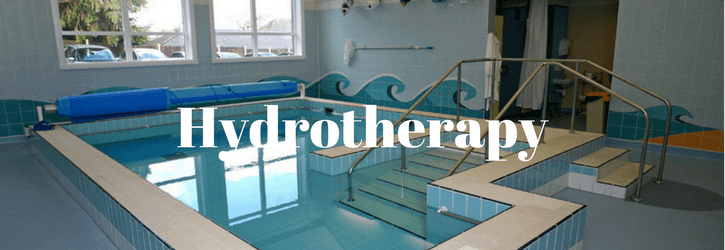Hydrotherapy for CRPS

Complex Regional Pain Syndrome Richard Lowes
If approached in the correct way, hydrotherapy, which involves physical therapy and exercising in warm water, can prove an effective part of the rehabilitation regime for people suffering CRPS. However, not only are dedicated hydrotherapy facilities few in number in the UK, but the particular needs of CRPS sufferers serves to further restrict the availability of sessions.
Most hydrotherapy pools are tiny, resembling swimming pools in miniature; more like a plunge pool. In the pool, people with CRPS require more space around them. In this way the movement of the water can be kept to a minimum and the prospect of accidental contact with others can be largely eliminated. Of course, the only way to achieve this is to limit the number of other patients using the facility concurrently, thus exacerbating the availability issue.
Are swimming pools the answer?
Historically, the main barrier to using municipal swimming pools as an alternative or overflow facility, even at quieter times, has been the temperature of the water. The typical temperature of a municipal pool is 29°C, as compared to the optimum temperature for hydrotherapy which is 35°C. That said, some municipal pools do now increase their water temperature, often once a week, to facilitate their use by local therapists for hydrotherapy purposes. However, most people with CRPS understandably prefer the quieter and more protective environment of a dedicated hydrotherapy facility.
The other problem with using a large, municipal pool is the cooler air temperature. It can prove detrimental to somebody suffering CRPS to emerge from warm water into a significantly colder environment.
What’s the approach?
For those suffering CRPS, therapists often adopt a graded entry approach to immersion in the water. This may begin without immersion at all, simply watching others in the pool before progressing to partial immersion and then to full immersion.
The buoyancy of the water helps people to move in ways more usually prevented by pain and stiffness. Although hypersensitivity can still be an issue, the majority of people with CRPS who try hydrotherapy seem to make faster progress than with traditional ‘dry’ physical therapy. Interestingly, whilst exercising, therapists will encourage people to watch their CRPS affected limb, thereby also using a form of graded motor imagery.
At the conclusion of a treatment session therapists should factor in a reasonable period of recovery.
How can I access hydrotherapy?
Not all NHS physiotherapy departments have access to a hydrotherapy facility, either on site or locally. There are some available in the private sector, but the best way to identify the closest facility is to discuss the option of hydrotherapy with your physical therapist and/or pain medicine consultant. If available, hydrotherapy usually forms part of multi-disciplinary rehabilitation programmes.
If you are fortunate enough to have a NHS facility close by, you must be prepared for a lengthy waiting list. Despite that, I have heard that some NHS departments actively discourage patients from investigating private hydrotherapy options, even going so far as to tell people that they will be discharged altogether by the department if they seek to ‘mix and match’ private and NHS treatment!
You may also be interested in the following articles:
The link between CRPS, Chronic Pain and hearing related problems
Who is likely to develop CRPS?
Scrambler Therapy for Chronic Pain (including Neuropathic Pain and CRPS): safe and inexpensive, but is it effective?
Dating with CRPS and Chronic Pain: my tips
The challenge of parenting with CRPS and Chronic Pain
https://www.blbchronicpain.co.uk/news/hydrotherapy-for-crps/
No comments:
Post a Comment
All comments welcome but advertising your own service or product will unfortunately result in your comment not being published.